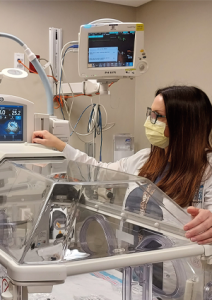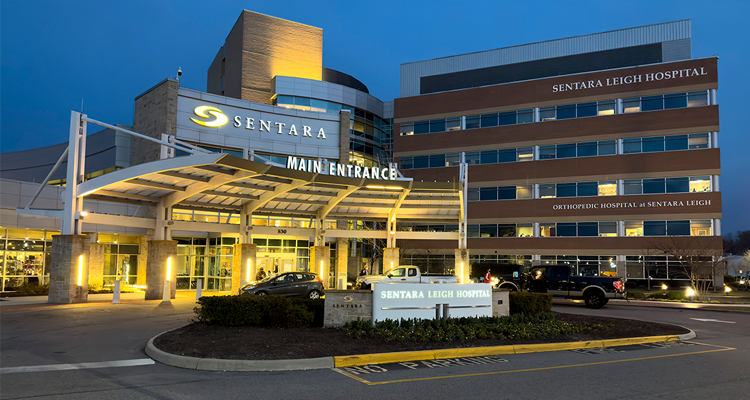Sentara Healthcare: behind the curtain at one of America’s best employers
Sentara Healthcare (Sentara) operates with a core mantra: “We improve health every day.” Patients may change, but the mission is constant. Each day, Sentara seeks to improve lives through better health – and it has been doing so for more than 130 years. To find out more, we recently sat down with Jennifer McPherren, Chief Supply Chain Officer of Supply Chain Management at Sentara.
“For many years, Sentara has been one organization that operates two different services in order to meet the needs of our communities,” she begins. “Indeed, it is both a healthcare delivery organization and operates its own health plan. We intentionally lead with our ‘One Sentara’ model to bring these two distinct service offerings into closer alignment, generating a more unified encounter for our consumers.
“Our goal is to provide an experience that is simple, seamless, personal, and affordable,” continues Jennifer. “This is because those are the key elements that we believe consumers are looking for in virtually every purchasing decision – and healthcare should be no exception. Above all else, Sentara exists to be the trusted partner for individuals and the wider community on their journey to health and well-being.”

As Jennifer has intimated, Sentara is an integrated, not-for-profit health care delivery system, recognized nationally for superior clinical quality and safety. The provider is strategically focused on innovation and intends to create a robust health care experience for its patients and members.
More specifically, Sentara is an Integrated Delivery Network (IDN), which comprises significant provider and health plan operations. So much so, that annual revenue now exceeds $10 billion, and the organization is a recipient of numerous awards. For instance, Sentara was named in IBM Watson Health’s ‘Top 15 Health Systems’ for 2021 and 2018 and was acknowledged by Forbes as the ‘Best Employer for Women’ in 2020 and, two years previously, one of ‘America’s Best Employers’.
People-focused infrastructure
Headquartered in Norfolk, Virginia, the organization operates 12 hospitals across its home state as well as North Carolina, which amounts to a staggering 2737 beds and over 100 outpatient care centers and sites of care. Working across the network are 29,000 diligent employees and 1375 physicians and advanced practice providers.
This robust, people-focused infrastructure enables the healthcare provider to carry out over 200,000 inpatient admissions, 730,000 emergency visits, and 88,000 surgeries, while serving its total of 950,000 Sentara Health Plan members. Indeed, in 2022 alone, the group fulfilled just under three million visits. Aiding Sentara on its mission, says Jennifer, is an equally robust approach to data, technology, and supply chain processes.
“As incredibly taxing as the pandemic has been on healthcare providers’ supply chain operations, it has also created an impetus for programmatic advancement opportunities,” she explains. “Visibility into real-time inventory levels is no longer a request – it is a requirement. That’s because there is a patient in need of, say, a CT scan or there is an infant relying on formula, provisions for which were incredibly scarce across the US last year. Therefore, proactive product substitution identification can be the difference between a seamless continuum of care or disruption for our caregivers. The latter of which could undoubtedly pull our caregivers from the bedside.
“To that end, we have deployed a new Inventory Control team,” she goes on. “They are leveraging technology to automate our substitution ordering process. This effort has resulted in a reduction of backorders by over 50 percent, while increasing our raw fill service level rates by an additional 15 percent, which is critically integral given the vast number of supply disruptions we’ve faced. Further, the team is focused on monitoring replenishment ordering patterns against legacy par levels. This concentrated effort has consequently provided insight into utilization shifts and allowed us to take advantage of material inventory reduction opportunities as they arise.”
While Jennifer admits that supply chain has had an invaluable track record for being a reliable care partner, her current efforts are more focused on advancing the perception of the division. Once considered simply a back-office necessity, it is currently in the process of being rebranded as a strategic lever for the wider business.
“We’re purposefully and continuously focused on redesigning decision-making from the clinician’s point of view,” she says. “Supply chain is arming our physicians with viable options based on accurate analytics, so that they can dictate both the appropriateness of devices for care and the pathway by which we’re meeting our financial reduction goals for the organization. In the end, the decisions made by clinicians for clinicians will inevitably increase widespread adoption while reducing conversion cycles and request-to-fulfilment timelines.”
A resounding success

Indeed, in any organization, the supply chain needs to become a catalyst for change, particularly in Sentara’s case when there is a definitive link with strong management, improved clinical outcomes and organizational growth. Another way Sentara is fortifying its supply chain processes is through Workday – a new Enterprise Resource Planning (ERP) system. “Workday has proved to be a foundational advancement for supply chain,” Jennifer reveals. “Our legacy environment was highly complex and riddled with numerous interdependencies amongst multiple systems.
“Complicating matters further, our ecosystem was heavily reliant on third parties, and this – coupled with archaic homegrown systems and elaborate customization – made functional upgrade advancements increasingly problematic. The Workday initiative afforded us the opportunity to pressure test legacy processes, allowing us to not only improve the end-user experience for procure-to-pay, but also consolidate activity, streamline work efforts, and increase visibility for our supply chain team.”
In total, Sentara integrated 165 systems, converted over 3 million records, reduced its item master by 75 percent, increased inventory turns while reducing inventory levels, and retired numerous applications. Overall, then, a resounding success. To maintain this upward trajectory, Jennifer is also a strong proponent of risk management within the supply chain network.
She explains: “We have an enterprise approach to assessing and actively reducing Vendor Risk Management (VRM). Our VRM framework and governance model intersects best practice processes with technology, allowing us to optimize our vendor partnerships and extract value beyond just the transaction level.
Improvement agenda
“This past year, our VRM Oversight Committee has purposefully reconsidered our vendor related policies, risk assessment procedures, and monitoring performance criteria,” Jennifer reflects. “We have, in turn, invested in a new Contract Lifecycle Management (CLM) solution that will provide enhanced visibility, risk prevention, and proactive management across our
40,000-plus provider and health plan contractual commitments. Simply put, we envision a future state where our CLM and ERP platforms share data bi-directionally, interconnecting commitments between transactions and transcending our VRM platform even further.”
Jennifer continues, “Another part of our improvement agenda is through our diversity drive. We have since established an organizational commitment to develop, invest, and grow a progressive diversity, equity, and inclusion program. To that end, our supply chain team has made strides to embed diversity as an intentional component of our everyday business practices and corporate goals. We’re approaching this effort from three perspectives by supporting diverse workforce initiatives, investing in local businesses, and diversifying our supplier base.
“Soon after we launched our efforts, we were named Regional Corporation of the Year for 2021 by the Carolinas-Virginia Minority Suppliers Development Council. Last year we exceeded our targets by growing our diverse spend base by an additional 29 percent. Most importantly, we are creating an accessible environment for new business partners that grows jobs and prosperity in the communities we serve.”
